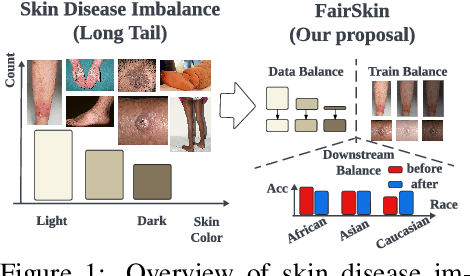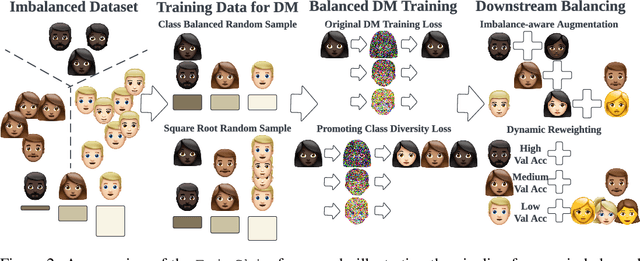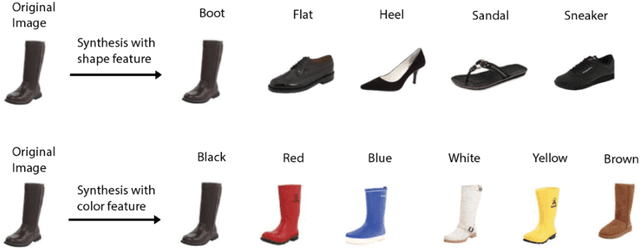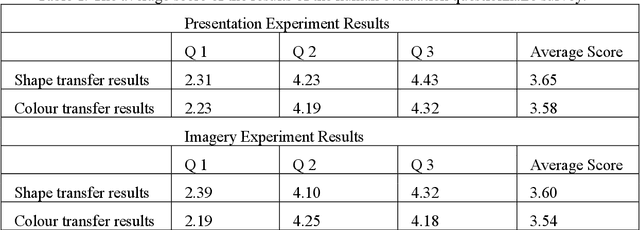Pan Wang
DLF: Disentangled-Language-Focused Multimodal Sentiment Analysis
Dec 16, 2024Abstract:Multimodal Sentiment Analysis (MSA) leverages heterogeneous modalities, such as language, vision, and audio, to enhance the understanding of human sentiment. While existing models often focus on extracting shared information across modalities or directly fusing heterogeneous modalities, such approaches can introduce redundancy and conflicts due to equal treatment of all modalities and the mutual transfer of information between modality pairs. To address these issues, we propose a Disentangled-Language-Focused (DLF) multimodal representation learning framework, which incorporates a feature disentanglement module to separate modality-shared and modality-specific information. To further reduce redundancy and enhance language-targeted features, four geometric measures are introduced to refine the disentanglement process. A Language-Focused Attractor (LFA) is further developed to strengthen language representation by leveraging complementary modality-specific information through a language-guided cross-attention mechanism. The framework also employs hierarchical predictions to improve overall accuracy. Extensive experiments on two popular MSA datasets, CMU-MOSI and CMU-MOSEI, demonstrate the significant performance gains achieved by the proposed DLF framework. Comprehensive ablation studies further validate the effectiveness of the feature disentanglement module, language-focused attractor, and hierarchical predictions. Our code is available at https://github.com/pwang322/DLF.
FairSkin: Fair Diffusion for Skin Disease Image Generation
Oct 31, 2024



Abstract:Image generation is a prevailing technique for clinical data augmentation for advancing diagnostic accuracy and reducing healthcare disparities. Diffusion Model (DM) has become a leading method in generating synthetic medical images, but it suffers from a critical twofold bias: (1) The quality of images generated for Caucasian individuals is significantly higher, as measured by the Frechet Inception Distance (FID). (2) The ability of the downstream-task learner to learn critical features from disease images varies across different skin tones. These biases pose significant risks, particularly in skin disease detection, where underrepresentation of certain skin tones can lead to misdiagnosis or neglect of specific conditions. To address these challenges, we propose FairSkin, a novel DM framework that mitigates these biases through a three-level resampling mechanism, ensuring fairer representation across racial and disease categories. Our approach significantly improves the diversity and quality of generated images, contributing to more equitable skin disease detection in clinical settings.
FrameNeRF: A Simple and Efficient Framework for Few-shot Novel View Synthesis
Feb 26, 2024Abstract:We present a novel framework, called FrameNeRF, designed to apply off-the-shelf fast high-fidelity NeRF models with fast training speed and high rendering quality for few-shot novel view synthesis tasks. The training stability of fast high-fidelity models is typically constrained to dense views, making them unsuitable for few-shot novel view synthesis tasks. To address this limitation, we utilize a regularization model as a data generator to produce dense views from sparse inputs, facilitating subsequent training of fast high-fidelity models. Since these dense views are pseudo ground truth generated by the regularization model, original sparse images are then used to fine-tune the fast high-fidelity model. This process helps the model learn realistic details and correct artifacts introduced in earlier stages. By leveraging an off-the-shelf regularization model and a fast high-fidelity model, our approach achieves state-of-the-art performance across various benchmark datasets.
RadOcc: Learning Cross-Modality Occupancy Knowledge through Rendering Assisted Distillation
Dec 19, 2023



Abstract:3D occupancy prediction is an emerging task that aims to estimate the occupancy states and semantics of 3D scenes using multi-view images. However, image-based scene perception encounters significant challenges in achieving accurate prediction due to the absence of geometric priors. In this paper, we address this issue by exploring cross-modal knowledge distillation in this task, i.e., we leverage a stronger multi-modal model to guide the visual model during training. In practice, we observe that directly applying features or logits alignment, proposed and widely used in bird's-eyeview (BEV) perception, does not yield satisfactory results. To overcome this problem, we introduce RadOcc, a Rendering assisted distillation paradigm for 3D Occupancy prediction. By employing differentiable volume rendering, we generate depth and semantic maps in perspective views and propose two novel consistency criteria between the rendered outputs of teacher and student models. Specifically, the depth consistency loss aligns the termination distributions of the rendered rays, while the semantic consistency loss mimics the intra-segment similarity guided by vision foundation models (VLMs). Experimental results on the nuScenes dataset demonstrate the effectiveness of our proposed method in improving various 3D occupancy prediction approaches, e.g., our proposed methodology enhances our baseline by 2.2% in the metric of mIoU and achieves 50% in Occ3D benchmark.
FedEdge AI-TC: A Semi-supervised Traffic Classification Method based on Trusted Federated Deep Learning for Mobile Edge Computing
Aug 14, 2023Abstract:As a typical entity of MEC (Mobile Edge Computing), 5G CPE (Customer Premise Equipment)/HGU (Home Gateway Unit) has proven to be a promising alternative to traditional Smart Home Gateway. Network TC (Traffic Classification) is a vital service quality assurance and security management method for communication networks, which has become a crucial functional entity in 5G CPE/HGU. In recent years, many researchers have applied Machine Learning or Deep Learning (DL) to TC, namely AI-TC, to improve its performance. However, AI-TC faces challenges, including data dependency, resource-intensive traffic labeling, and user privacy concerns. The limited computing resources of 5G CPE further complicate efficient classification. Moreover, the "black box" nature of AI-TC models raises transparency and credibility issues. The paper proposes the FedEdge AI-TC framework, leveraging Federated Learning (FL) for reliable Network TC in 5G CPE. FL ensures privacy by employing local training, model parameter iteration, and centralized training. A semi-supervised TC algorithm based on Variational Auto-Encoder (VAE) and convolutional neural network (CNN) reduces data dependency while maintaining accuracy. To optimize model light-weight deployment, the paper introduces XAI-Pruning, an AI model compression method combined with DL model interpretability. Experimental evaluation demonstrates FedEdge AI-TC's superiority over benchmarks in terms of accuracy and efficient TC performance. The framework enhances user privacy and model credibility, offering a comprehensive solution for dependable and transparent Network TC in 5G CPE, thus enhancing service quality and security.
Contrast-augmented Diffusion Model with Fine-grained Sequence Alignment for Markup-to-Image Generation
Aug 02, 2023



Abstract:The recently rising markup-to-image generation poses greater challenges as compared to natural image generation, due to its low tolerance for errors as well as the complex sequence and context correlations between markup and rendered image. This paper proposes a novel model named "Contrast-augmented Diffusion Model with Fine-grained Sequence Alignment" (FSA-CDM), which introduces contrastive positive/negative samples into the diffusion model to boost performance for markup-to-image generation. Technically, we design a fine-grained cross-modal alignment module to well explore the sequence similarity between the two modalities for learning robust feature representations. To improve the generalization ability, we propose a contrast-augmented diffusion model to explicitly explore positive and negative samples by maximizing a novel contrastive variational objective, which is mathematically inferred to provide a tighter bound for the model's optimization. Moreover, the context-aware cross attention module is developed to capture the contextual information within markup language during the denoising process, yielding better noise prediction results. Extensive experiments are conducted on four benchmark datasets from different domains, and the experimental results demonstrate the effectiveness of the proposed components in FSA-CDM, significantly exceeding state-of-the-art performance by about 2%-12% DTW improvements. The code will be released at https://github.com/zgj77/FSACDM.
Multi-scale multi-modal micro-expression recognition algorithm based on transformer
Jan 11, 2023



Abstract:A micro-expression is a spontaneous unconscious facial muscle movement that can reveal the true emotions people attempt to hide. Although manual methods have made good progress and deep learning is gaining prominence. Due to the short duration of micro-expression and different scales of expressed in facial regions, existing algorithms cannot extract multi-modal multi-scale facial region features while taking into account contextual information to learn underlying features. Therefore, in order to solve the above problems, a multi-modal multi-scale algorithm based on transformer network is proposed in this paper, aiming to fully learn local multi-grained features of micro-expressions through two modal features of micro-expressions - motion features and texture features. To obtain local area features of the face at different scales, we learned patch features at different scales for both modalities, and then fused multi-layer multi-headed attention weights to obtain effective features by weighting the patch features, and combined cross-modal contrastive learning for model optimization. We conducted comprehensive experiments on three spontaneous datasets, and the results show the accuracy of the proposed algorithm in single measurement SMIC database is up to 78.73% and the F1 value on CASMEII of the combined database is up to 0.9071, which is at the leading level.
Reconstruction of compressed spectral imaging based on global structure and spectral correlation
Oct 27, 2022Abstract:In this paper, a convolution sparse coding method based on global structure characteristics and spectral correlation is proposed for the reconstruction of compressive spectral images. The proposed method uses the convolution kernel to operate the global image, which can better preserve image structure information in the spatial dimension. To take full exploration of the constraints between spectra, the coefficients corresponding to the convolution kernel are constrained by the norm to improve spectral accuracy. And, to solve the problem that convolutional sparse coding is insensitive to low frequency, the global total-variation (TV) constraint is added to estimate the low-frequency components. It not only ensures the effective estimation of the low-frequency but also transforms the convolutional sparse coding into a de-noising process, which makes the reconstructing process simpler. Simulations show that compared with the current mainstream optimization methods (DeSCI and Gap-TV), the proposed method improves the reconstruction quality by up to 7 dB in PSNR and 10% in SSIM, and has a great improvement in the details of the reconstructed image.
A Semantic Consistency Feature Alignment Object Detection Model Based on Mixed-Class Distribution Metrics
Jun 12, 2022



Abstract:Unsupervised domain adaptation is critical in various computer vision tasks, such as object detection, instance segmentation, etc. They attempt to reduce domain bias-induced performance degradation while also promoting model application speed. Previous works in domain adaptation object detection attempt to align image-level and instance-level shifts to eventually minimize the domain discrepancy, but they may align single-class features to mixed-class features in image-level domain adaptation because each image in the object detection task may be more than one class and object. In order to achieve single-class with single-class alignment and mixed-class with mixed-class alignment, we treat the mixed-class of the feature as a new class and propose a mixed-classes $H-divergence$ for object detection to achieve homogenous feature alignment and reduce negative transfer. Then, a Semantic Consistency Feature Alignment Model (SCFAM) based on mixed-classes $H-divergence$ was also presented. To improve single-class and mixed-class semantic information and accomplish semantic separation, the SCFAM model proposes Semantic Prediction Models (SPM) and Semantic Bridging Components (SBC). And the weight of the pix domain discriminator loss is then changed based on the SPM result to reduce sample imbalance. Extensive unsupervised domain adaption experiments on widely used datasets illustrate our proposed approach's robust object detection in domain bias settings.
Product semantics translation from brain activity via adversarial learning
Mar 29, 2021



Abstract:A small change of design semantics may affect a user's satisfaction with a product. To modify a design semantic of a given product from personalised brain activity via adversarial learning, in this work, we propose a deep generative transformation model to modify product semantics from the brain signal. We attempt to accomplish such synthesis: 1) synthesising the product image with new features corresponding to EEG signal; 2) maintaining the other image features that irrelevant to EEG signal. We leverage the idea of StarGAN and the model is designed to synthesise products with preferred design semantics (colour & shape) via adversarial learning from brain activity, and is applied with a case study to generate shoes with different design semantics from recorded EEG signals. To verify our proposed cognitive transformation model, a case study has been presented. The results work as a proof-of-concept that our framework has the potential to synthesis product semantic from brain activity.
 Add to Chrome
Add to Chrome Add to Firefox
Add to Firefox Add to Edge
Add to Edge